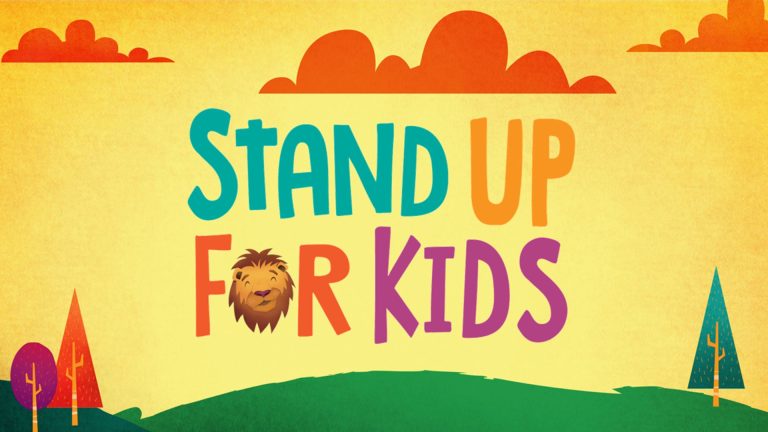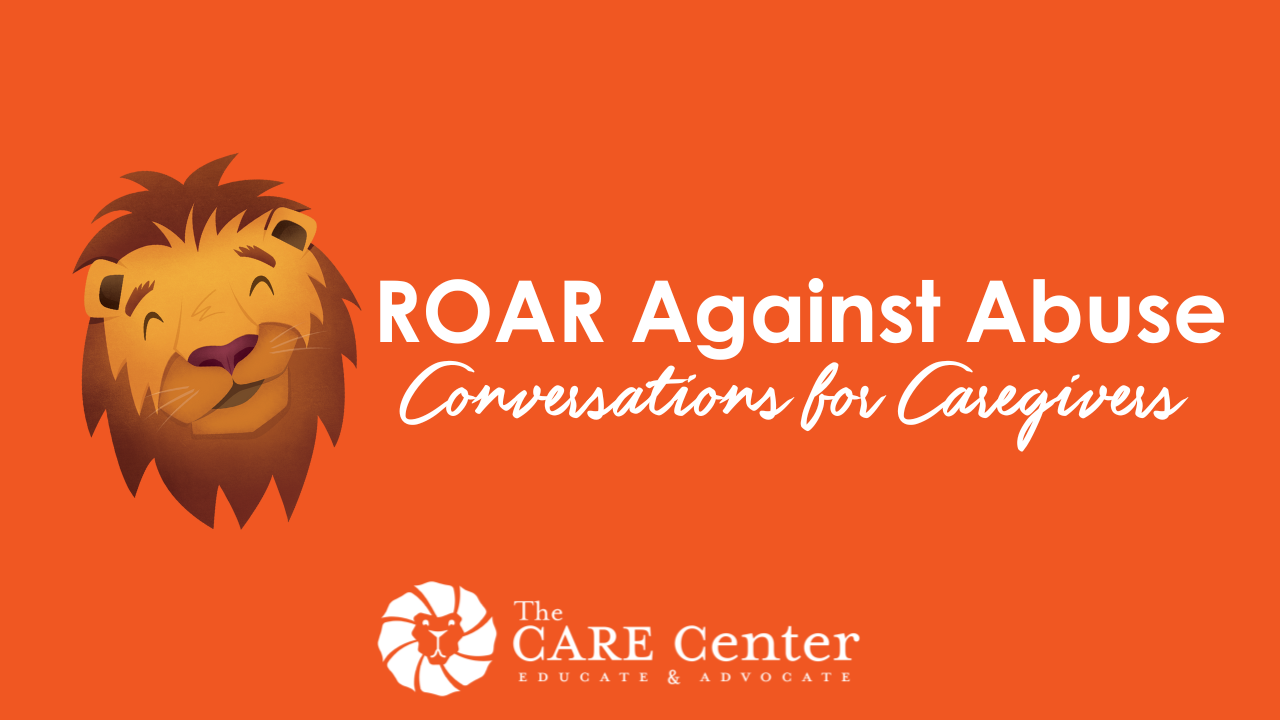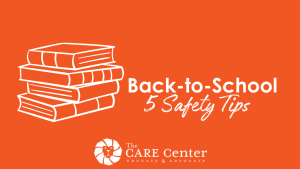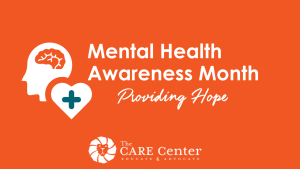ROAR Against Child Abuse: Conservations Every Caregiver Must Have
Child abuse is an epidemic. According to the National Children’s Alliance, nationally and locally, 1 in 7 children are victims of abuse before their 18th birthday.
“Talking openly with children about keeping their bodies safe is the first step in protecting them from abuse,” says Shelby Lynch, Director of Education at The CARE Center.
This topic might be uncomfortable, but it’s never too early to teach children about body safety. Frequent, age-appropriate conversations can act as an important tool in preventing child abuse and can equip children to speak up if abuse occurs.

ROAR, The CARE Center’s child abuse prevention education program for ages 4-8, uses the following “Rules of ROARing” to discuss body safety and empowerment.

R-Remember, Privates are Privates:
Private parts are private, and they include anything covered by a bathing suit. We don’t touch, look at, or ask to play games with anyone’s private parts.
Why it Matters:
At a young age, children begin to show curiosity about their own and other people’s bodies. While curiosity is natural, it’s important to explain to children that their private parts are just for them, and that others’ private parts are off limits.
What to Say:
- Use accurate names for anatomical parts
- Let them know no one, not even a friend or family member, has the right to touch a child’s private parts
- Sometimes, a caregiver or doctor may need to check a private area if they are sick or in pain, but they should always explain why and ask for permission
- Encourage the child to tell a trusted adult if they ever experience unwanted touches from an adult or another child

O- Okay to Say NO:
Every child has the right to say “NO” to anyone—adult, teen, or child—touching their body or asking to be touched.
Why it Matters:
90 percent of the time, children are abused by someone they know, love, and trust. For this reason, it is important that caregivers never force children to touch anyone, including family members or friends.
“Culturally, it may be expected to give family members hugs and kisses, but it is important to give children the option to decline. A touch doesn’t have to be “bad” to be unwanted, and giving a child the choice to accept or refuse a touch lays a foundation for the concepts of consent and bodily autonomy,” says Lynch.
What to Say:
- Remind the child it is always okay to say NO to any touches, even caring touches
- Explain to children the difference between caring touches such as a pat on the back versus those that are confusing or unsafe
- Let the child know that even if they are unsure if a touch is caring or unsafe, they can always ask a trusted adult to help them decide
- The child should know that if they do experience and uncomfortable or unsafe touch they should immediately tell a trusted adult

A- Always Talk About Secrets:
It’s important for children to learn the difference between a secret and surprise, and to talk about things that make them feel sad, scared, or unsafe.
Why it Matters:
Perpetrators use secrecy to gain and maintain access to their victims. It’s important that children can differentiate between secrets that make them feel unsafe, confidential information, and harmless surprises. Secrets between adults and children should not exist.
What to Say:
- Surprises are exciting for everyone and are only a secret for a short period of time
- Try saying: “Surprises are fun for everyone and are things like a surprise birthday party or a gift we are giving to a friend.”
- Secrets, especially those that feel unsafe or scary, should never be kept
- Try saying: “Secrets should never be kept from adults, especially secrets that make us feel scared or unsafe.”
- Explain that no adults should ask a child to keep secrets

R- Raise Your Voice and Tell Someone:
Let children know that they can speak to a safe grownup if anyone—a stranger, a family member, or a friend—makes them feel uncomfortable. Help children identify at least three safe adults both inside and outside of the home. Safe adults listen without judgement, validate a child’s feelings, and advocate for a child’s safety.
Why it Matters:
Nationally, it is estimated that only 1 in 10 children will tell someone about their abuse. However, when communities implement a child abuse prevention program, children feel more empowered to disclose their abuse to a trusted adult. Regular, open, and honest communication with children can be a safeguard against child abuse.
What to Say:
- Reassure children that it’s okay to speak with other grownups if they don’t feel comfortable talking with a caregiver
- Safe adults could be extended family members, teachers, school counselors, or other persistent figures in a child’s life
- Regularly discuss and review who the safe adults are in your child’s life
If a child discloses abuse to you, believe what they say, thank them for telling you, then report suspected abuse to law enforcement and DHS. Every Oklahoman is a mandated reporter of child abuse.
For an interactive learning experience with a child, purchase Rex Finds His ROAR on Amazon. To learn more about scheduling child abuse prevention education at your organization or school for both children and adults, visit our website.
To further support The CARE Center’s efforts to end child abuse in Oklahoma County, join community leaders and advocates for The CARE Center’s annual FREE luncheon, Stand Up For Kids, at The Skirvin Hotel on August 22nd, to raise awareness and support for our critical services and programs. RSVP, sign up to host a table, or explore sponsorship opportunities to help us continue our mission of healing and prevention education.








